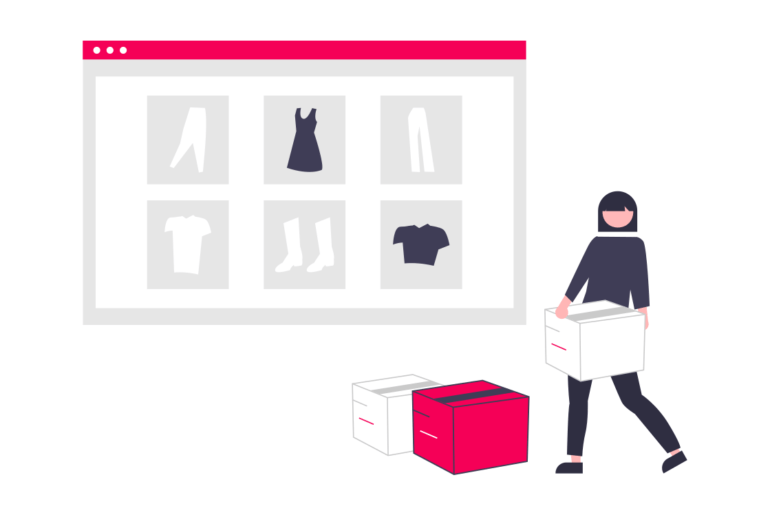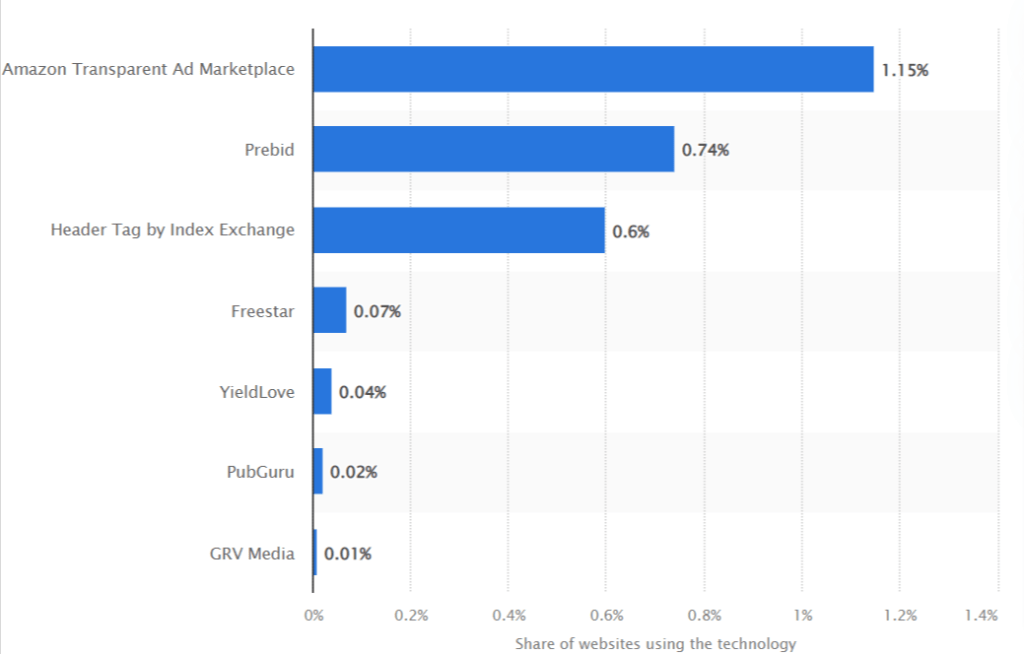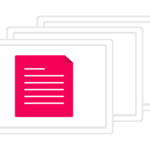Discover the secret to dominating online visibility with our expert guide to ad impressions. Supercharge your brand’s potential and outshine the competition today!
In today’s world where plenty of content is available for people to consume, capturing the attention of potential customers has become an art form. Advertisers and marketers are constantly seeking innovative strategies to stand out from the crowd, forge meaningful connections, and drive tangible results. Amidst this pursuit, a term arises, which opens up a world of possibilities: Ad Impressions.
Ad Impressions are fundamental metric in online advertising that serves as the gateway to captivating audiences, sparking curiosity, and nurturing conversions. But what exactly are ad impressions? How do they hold the potential to revolutionize the way we engage with our target market?
Data tells an intriguing tale: billions of ad impressions reverberate across the digital sphere each day, painting an ever-evolving landscape of opportunities. In fact, it has been discovered that the US digital ad market is set to exceed $300 billion by the end of 2025, which makes up more than three-quarters of all media spending.

However, true success lies not just in sheer numbers but in understanding the nuances that reside within these impressions.
So, let’s first understand “what is an ad impression?”
What are Ad Impressions?
An ad impression is a fundamental metric in online advertising. It occurs when an advertisement is successfully displayed to a user on a website, mobile app, or any digital platform. It signifies that the ad has been visually presented, regardless of whether the user interacts with it or not.
Ad impressions serve as a vital indicator of reach and visibility, allowing advertisers to gauge the potential audience exposure and evaluate the performance of their campaigns. By tracking the number of ad impressions, marketers can assess the effectiveness of their ad placements, ad formats, and targeting strategies, helping them make informed decisions to optimize their advertising efforts and maximize their impact.
Why are Ad Impressions Important?
Ad impressions hold significance in advertising for several reasons. Let’s take a look.
Firstly, they serve as a measure of the reach and visibility of an ad. Each impression represents an instance in which the ad is displayed to a user, indicating potential exposure to a target audience. This information is valuable for advertisers to assess the effectiveness and performance of their campaigns.
Secondly, impressions contribute to building brand awareness. Even if a user does not click on the ad, mere exposure to the advertisement can create familiarity and recognition. Consistent impressions increase the likelihood of users remembering the brand or product when they encounter it again in the future, potentially influencing their purchasing decisions.
Furthermore, impressions are often used in calculating other essential advertising metrics, such as click-through rates (CTR) and cost-per-thousand-impressions (CPM). CTR measures the proportion of users who click on an ad after viewing it, while CPM reflects the cost incurred per one thousand impressions. Both metrics are crucial for evaluating campaign performance and optimizing marketing budgets.
What are the Types of Ad Impressions
There are two types of ad impressions, have a look.
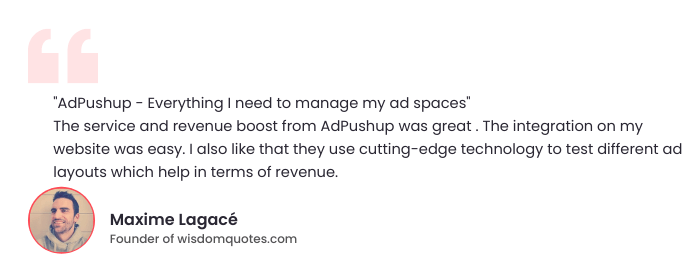
Served Impressions
As the name suggests, served impressions are the ones that are successfully served. In other words, instances when the advertisement is finally displayed on the users’ screen. These impressions are counted when the ad server serves the impressions, regardless of whether users have seen or interacted with them.
Viewable Impressions
On the other hand, viewable impressions are the ones that are counted when the ads are seen by the users.
According to the Media Rating Council and Interactive Advertising Bureau, an ad impression is deemed viewable if:
1. Content Visibility
At least 50% of the ad content is visible on an active, open browser tab and within the user’s viewable area. In other words, a certain portion has to be appearing on the users’ screen for a specified time for it to be counted as an ad impression.
2. Time Metric
The ad needs to remain visible for a minimum of one second after it loads, which ensures that potential viewers have an opportunity to see it.
Difference Between Ad Impression, Ad Clicks, and Ad Reach?
When it comes to distinguishing between impressions and clicks, their dissimilarity is apparent from their very names.
Ad Impressions vs Ad Clicks
An impression denotes the instance when a user merely perceives an advertisement without taking any further action.
On the other hand, an engagement, commonly referred to as a click, materializes when the user actively proceeds to interact with the ad by clicking on it.
Although engagements hold a higher level of significance, it is important not to undermine the importance of impressions in mobile marketing. Understanding the disparity between these metrics is crucial for marketers striving to optimize their advertising strategies.
Ad Impressions vs Ad Reach
Ad reach is a more refined metric, which reveals the number of times the ad has been seen by unique individuals.
For an example,
Imagine you have a flyer for your lemonade stand. If you hand out 1,000 flyers, that means you’ve distributed them 1,000 times. But it doesn’t mean 1,000 different people have looked at them. However, if you find out that 500 people have actually seen your flyer, that tells you 500 unique individuals have seen it and might be interested in buying your lemonade.
What are Unfilled Impressions?
As the name suggests, unfilled ad impressions are those that are left out. In other words, when there is no demand or bid available for a publisher’s ad space, the left-out ad space will be considered an unfilled ad impression.
These unfilled ad impressions represent the missed opportunities for publishers to generate revenue. It’s because many publishers rely on advertisements to monetize their content. There can be several reasons behind this. Let’s take a look at some of them.
Top Reasons for Unfilled Ad Impressions
There can be a plethora of reasons why an ad inventory goes unfulfilled. Here are a few of them:
Limited Demand
Insufficient demand for a specific ad placement can cause unfilled ad impressions. This is common amongst publishers with a niche segment that is not too broad as there will be less number of buyers for it. Conversely, when a niche is popular, it experiences higher demand, resulting in increased competition for ad space.
Ad Placement & Positioning
Ad placement and positioning play a huge role in attracting buyers. This alone holds the power to make or break your revenue generation strategy. If the ad placement is less available to the audience on the web page, chances of you experiencing unfilled ad impressions will be higher.
Ad Blocking
Another reason behind the unfilled app spaces is the use of ad-blocking software by users. This prevents ads from being displayed on the websites. These ad-blocking software filter out and block ads from being served to the user.
According to backlinko, about 42.7% of internet users globally (16-64 years old age group) use ad-blocking tools at least once a month.
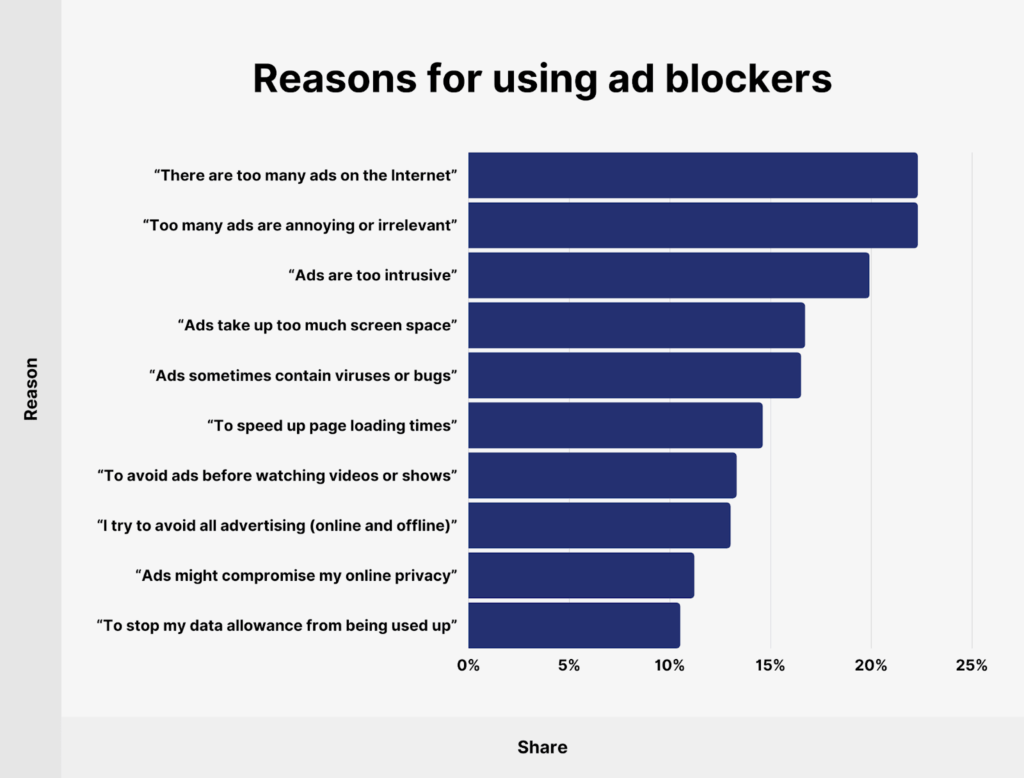
Due to the ad blockers, publishers lose significant revenue. To get rid of this and recover your revenue due to ad blockers, you can enlist the support of Adpushup. Our pro-user adblock monetization solution helps web publishers recover their ad revenue. Click here to talk to our experts.
Technical Issues
Lastly, glitches or errors within the ad serving system can lead to unfilled ad spaces. So, make sure there are no issues pertaining to the ad server system, such as ad server downtime or connectivity issues that prevent ads from being delivered.
What are the Important Metrics for Unfilled Ad Impressions?
When monetizing ad impressions, several important metrics can provide valuable insights into the performance and profitability of your ad inventory. These metrics encompass various aspects of ad delivery and user engagement. Let’s delve deeper into each metric:
Fill Rate
The fill rate is a crucial metric that measures the percentage of ad requests successfully filled with ads. It signifies the effectiveness of your ad inventory monetization. A higher fill rate indicates that more of your available impressions are being utilized.
By optimizing your fill rate, you will be able to increase the revenue potential of your ad inventory and ensure efficient ad delivery.
Revenue per Thousand Impressions (RPM)
RPM calculates the revenue generated for every thousand ad impressions. It provides a comprehensive understanding of your ad inventory’s overall performance and profitability. By analyzing RPM, you can evaluate the effectiveness of your monetization strategies, identify trends, and make informed decisions to enhance revenue generation.
Click-Through Rate (CTR)
CTR measures the percentage of ad impressions that result in user clicks. It reflects the level of engagement your ads are receiving from the audience. A higher CTR indicates that users actively interact with your ads, potentially leading to increased revenue. By monitoring and optimizing CTR, you can refine your ad content, targeting strategies, and placement to drive more user engagement.
Viewability
Viewability measures the percentage of ad impressions that are viewable to users. It ensures that your target audience can see your ads. Maximizing viewability is essential for improving ad performance and increasing the likelihood of generating revenue. By optimizing viewability, you can enhance user visibility, ad effectiveness, and overall campaign success.
eCPM (Effective Cost per Thousand Impressions)
eCPM calculates the effective cost per thousand ad impressions. This metric lets you compare the revenue potential across different ad types, networks, or campaigns. By analyzing eCPM, you can determine which ad formats or platforms generate higher returns, allowing you to allocate resources more effectively and maximize revenue.
Time to Fill
Time to Fill measures the duration of an ad request. Minimizing this duration maximizes revenue potential and provides a better user experience. Long wait times may lead to user frustration and decreased engagement. By optimizing time to fill, you can ensure prompt ad delivery, enhance user satisfaction, and maximize revenue opportunities.
By closely monitoring and analyzing these monetization metrics, you can gain valuable insights into the performance of your ad inventory, identify areas for improvement, and implement strategies to optimize revenue generation.
Remember, a balanced combination of high fill rate, optimal RPM, engaging CTR, excellent viewability, competitive eCPM, and swift time to fill can significantly impact the success of your monetization efforts.
How to Reduce Unfilled Ad Impressions?
Now that we know what the important metrics to keep in mind for unfilled ad impressions are, let’s look at some tips to help reduce them.
Use Header Bidding
If you have not yet utilized the header bidding, you’re missing out on a lot. Header bidding allows you to increase the competition for your ad space by allowing publishers showcase their ad inventory to multiple demand partners.
Header bidding is becoming more and more popular among publishers. Here’s what Statista’s data says about it.
Adjust Unified Pricing Rules in Google Ad Exchange
If you are relying on Google AdX, you need to tweak some settings to increase the coverage of ads. One thing that can attract advertisers is the higher bid for the ad space.
Doing this can help incentivize more advertisers to participate in bidding for the ad impressions, leading to increased coverage and reduced situations of unfilled impressions.
Why? It’s simply because a higher bid signals the value of the ad space, which captures the advertisers’ attention looking for premium placements.
Enable Dynamic Allocations
Another strategy that can help you eliminate unfilled ad impressions is enabling dynamic allocation. Also known as backfill, when you enable dynamic allocations, you allow Google Adsense to serve as a fallback option within their ad stack.
This means that if other ad sources or networks fail to fill an impression, AdSense can step in and fill the gap by displaying relevant ads. This feature ensures publishers maximize their revenue potential by reducing instances of ad spaces going unfilled.
Build Inventory Segments
Next; you should also consider constructing inventory segments that are attractive to third-party demand partners. This involves organizing and categorizing your inventory based on specific targeting criteria or audience segments in demand.
Tailoring your inventory segments to match the preferences of potential third-party partners can help you enhance the chances of filling more ad impressions.
Moreover, it is also suggested to select to partner with suitable third parties carefully. Not all bidder partners will contribute effectively to your fill rates. Therefore, evaluate potential partners based on their track record, expertise, and ability to align with your inventory and target audience.
You can optimize your fill rates and maximize revenue potential by collaborating with reliable and compatible third-party partners.
Final Words
All in all, understanding and monitoring the key monetization metrics of unfilled ad impressions, its causes, and strategies to avoid them are vital for publishers aiming to optimize their revenue generation.
Metrics such as fill rate, revenue per thousand impressions (RPM), click-through rate (CTR), viewability, eCPM (effective cost per thousand impressions), and time to fill provide valuable insights into the performance and profitability of ad inventory.
By improving these metrics, publishers can enhance their ad delivery effectiveness, maximize revenue potential, and provide a better user experience. By proactively analyzing and acting upon these metrics, publishers can drive better monetization outcomes and achieve greater success in their advertising efforts.
We hope by now you have a fair understanding of why some ad spaces go unfulfilled. With that being said, let’s wrap up the blog. Refer to the following FAQs for more.
Frequently Asked Questions on Ad Impression
In simple words, an ad impression refers to the instance when an advertisement is displayed or shown to a user. It represents the visibility of the ad and indicates that it has been viewed by someone.
1000 ad impressions means that an advertisement has been displayed or shown to users a total of 1000 times.
An ad request is the number of times a publisher has raised an ad request, whereas an ad impression is the number of times an ad space of the publisher’s inventory has been served.
As the names suggest itself, unfilled ad impressions are the ad spaces within publishers’ ad inventory that receive no ad request from the demand partners or advertisers.
There are several strategies you can use to troubleshoot unfilled impressions. Here are a few of them:
A)Use Header Bidding
B)Adjust Unified Pricing Rules in Google Ad Exchange
C)Enable Dynamic Allocations
D)Build Inventory Segments

Deepak has a keen eye for detail and a deep understanding of the ad tech landscape. Whether it’s through in-depth articles, thought-provoking insights, or compelling storytelling, he’s dedicated to helping people navigate the complex world of ad tech with the simplicity of his words.
